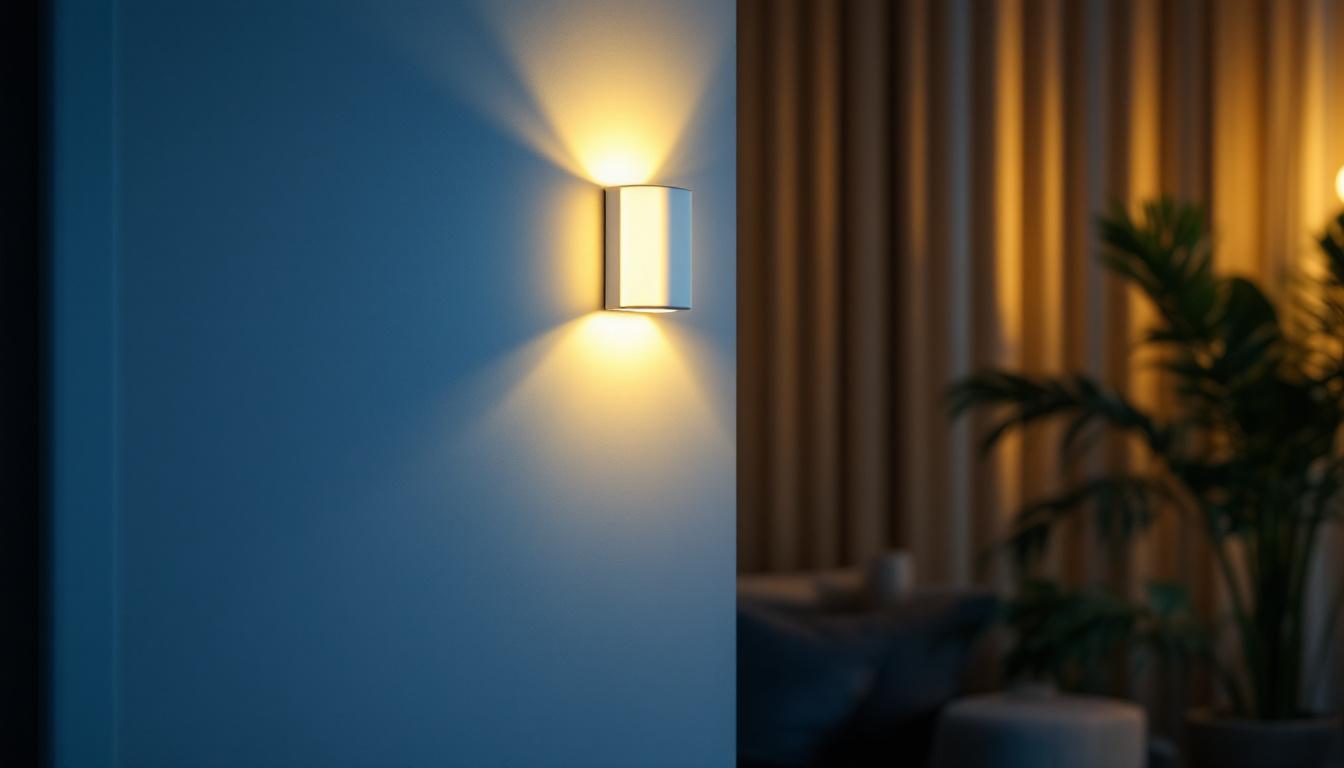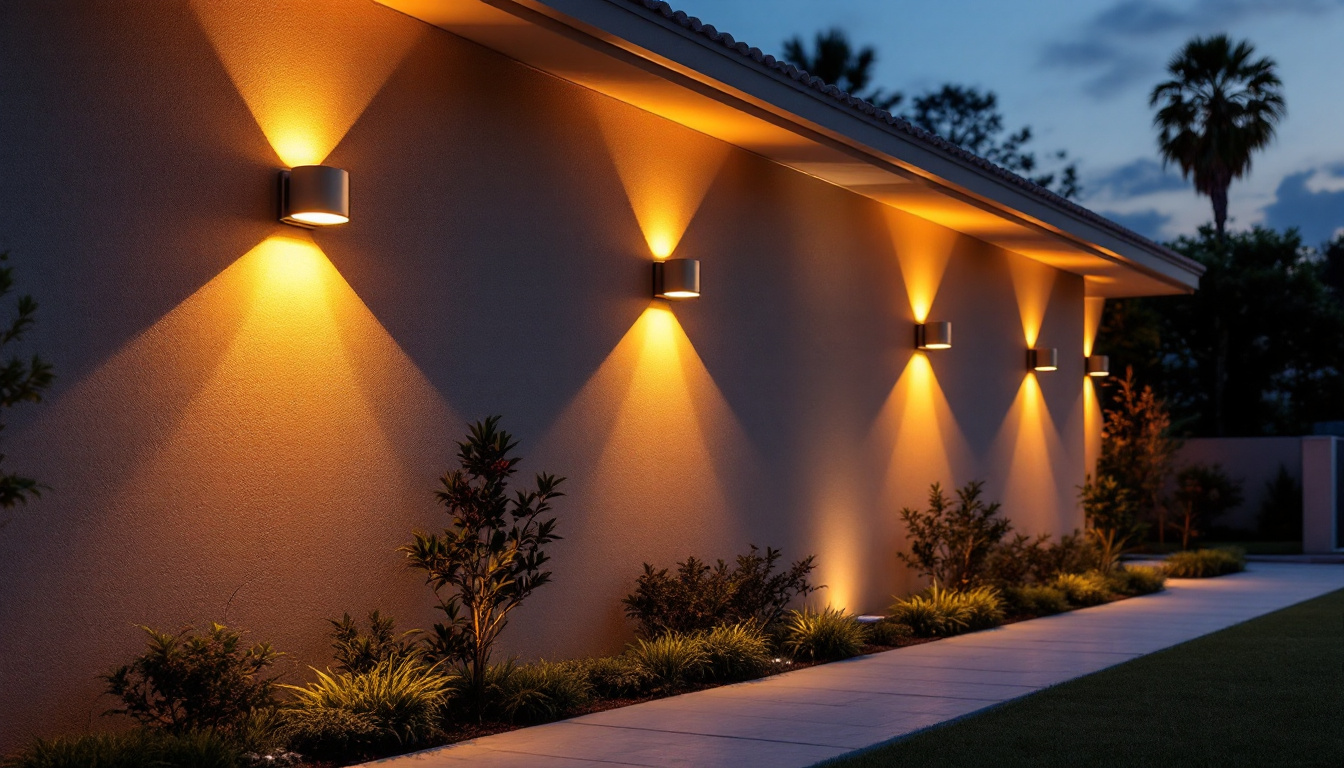
In an era where energy efficiency is paramount, the integration of LED motion sensors into lighting systems has emerged as a game-changer. These innovative devices not only enhance security but also significantly reduce energy consumption. For lighting contractors, understanding the benefits and applications of LED motion sensors is essential for delivering modern, efficient solutions to clients.
LED motion sensors are devices that detect movement and automatically activate lighting systems. They utilize advanced technology to sense the presence of individuals within a designated area, ensuring that lights are only on when needed. This functionality not only conserves energy but also extends the lifespan of lighting fixtures. With the growing emphasis on sustainability, these sensors have become an integral part of modern lighting design, promoting both efficiency and environmental responsibility.
Motion sensors typically operate using one of three technologies: passive infrared (PIR), ultrasonic, or dual technology. PIR sensors detect changes in infrared radiation, which is emitted by warm bodies. Ultrasonic sensors, on the other hand, emit sound waves and measure their reflection to detect movement. Dual technology combines both methods for enhanced accuracy and reliability. Each type has its unique strengths, making it essential to select the right sensor based on specific needs and environmental conditions.
The choice of technology can influence the effectiveness of the motion sensor in various environments. For instance, PIR sensors are ideal for outdoor applications, while ultrasonic sensors may be better suited for indoor spaces with obstacles. Additionally, some advanced models incorporate features such as adjustable sensitivity and time delay settings, allowing users to customize their operation for optimal performance in diverse situations.
Integrating LED motion sensors into lighting systems offers numerous benefits. Firstly, they significantly reduce energy consumption by ensuring that lights are only activated when necessary. This not only lowers electricity bills but also contributes to a smaller carbon footprint. The long lifespan of LED bulbs, combined with the efficiency of motion sensors, creates a powerful synergy that is both cost-effective and eco-friendly.
Moreover, LED motion sensors enhance safety and security. By illuminating areas only when movement is detected, they deter potential intruders and provide visibility in dark spaces. This is particularly beneficial for outdoor lighting in residential and commercial properties. In addition to security, these sensors can improve the overall user experience; for example, in public spaces like parking lots or hallways, they provide a sense of safety and comfort for pedestrians, ensuring that they are not left in darkness. Furthermore, the convenience of automatic lighting can be especially advantageous for individuals with mobility challenges, as it reduces the need to fumble for switches in low-light conditions.
The versatility of LED motion sensors makes them suitable for a wide range of applications. From residential homes to commercial buildings, these devices can be tailored to meet specific lighting needs.
In residential settings, LED motion sensors can be installed in driveways, walkways, and entryways. This ensures that homeowners have adequate lighting when arriving home at night, enhancing safety and convenience. Additionally, motion sensors can be utilized in garages and basements, where lights can be programmed to turn on automatically when someone enters the space.
Furthermore, integrating motion sensors with smart home systems allows homeowners to control their lighting remotely, providing an added layer of convenience and energy efficiency. For instance, homeowners can set their motion sensors to activate lights during specific times of the day or adjust the sensitivity to prevent false triggers from pets or passing cars. This level of customization not only enhances security but also contributes to a more personalized living environment, where lighting adapts to the lifestyle of the occupants.
In commercial environments, LED motion sensors can be employed in offices, warehouses, and retail spaces. In offices, they can help reduce energy costs by ensuring that lights are only on in occupied areas. This is particularly beneficial in large open-plan offices where employees may not occupy every desk at all times. By utilizing motion sensors, businesses can significantly lower their electricity bills while also contributing to sustainability efforts.
In retail spaces, motion sensors can enhance the shopping experience by ensuring that lights are activated as customers move through aisles, creating a welcoming atmosphere while also conserving energy during non-peak hours. Moreover, these sensors can be integrated with advanced analytics systems to track customer movement patterns, allowing retailers to optimize product placement and improve overall store layout. This not only maximizes the effectiveness of the lighting but also helps retailers create a more engaging shopping experience that encourages customer interaction and increases sales.
When selecting an LED motion sensor, several factors must be considered to ensure optimal performance. Understanding the specific requirements of the space is crucial for making an informed decision.
The coverage area of the motion sensor is one of the most critical aspects to evaluate. Different sensors have varying detection ranges, which can affect their effectiveness in larger or more complex spaces. For instance, a sensor with a wide coverage area may be ideal for outdoor applications, while a more focused sensor may be better suited for indoor use.
It is also essential to consider the mounting height and angle of the sensor to ensure maximum detection efficiency. Proper installation can significantly enhance the performance of the motion sensor.
Many LED motion sensors come with adjustable sensitivity settings, allowing users to customize the detection range based on their specific needs. This feature can be particularly useful in environments where false alarms may be a concern, such as areas with pets or frequent foot traffic.
By fine-tuning the sensitivity, contractors can ensure that the motion sensor activates only when necessary, further enhancing energy efficiency and user satisfaction.
Proper installation of LED motion sensors is crucial for their effectiveness. Lighting contractors must adhere to best practices to ensure optimal performance and longevity of the devices.
Choosing the right location for installing motion sensors can significantly impact their performance. Areas with high foot traffic or frequent movement are ideal for sensor placement. Additionally, positioning the sensor at the correct height and angle is essential for maximizing detection capabilities.
For outdoor installations, it is vital to consider environmental factors such as wind, rain, and snow, which can affect the sensor’s performance. Ensuring that the sensor is protected from the elements can enhance its reliability and lifespan.
Wiring the motion sensor correctly is another critical aspect of the installation process. Contractors should follow the manufacturer’s guidelines to ensure safe and efficient operation. Additionally, integrating the motion sensor with existing lighting systems may require specific configurations, depending on the setup.
For smart home applications, ensuring compatibility with other devices and systems is essential. This may involve using specific protocols or hubs to facilitate seamless communication between devices.
To ensure the continued effectiveness of LED motion sensors, regular maintenance and troubleshooting are necessary. Lighting contractors should educate clients on simple maintenance practices that can extend the life of their systems.
Conducting regular inspections of motion sensors can help identify any potential issues before they escalate. This includes checking for dirt or debris that may obstruct the sensor’s view, as well as ensuring that the sensor is securely mounted and functioning correctly.
Clients should also be advised to test the motion sensors periodically to ensure they activate as expected. This can help identify any sensitivity adjustments that may be necessary based on changes in the environment.
Common issues with motion sensors include false triggers, failure to activate, and inconsistent performance. Educating clients on how to troubleshoot these problems can enhance their satisfaction and reduce the need for service calls.
For instance, if a sensor is triggering falsely, it may be due to environmental factors such as moving branches or animals. Adjusting the sensitivity settings or repositioning the sensor may resolve the issue. In cases where the sensor fails to activate, checking the power supply and ensuring proper wiring connections is essential.
The landscape of LED motion sensors is continually evolving, driven by advancements in technology and increasing demand for energy-efficient solutions. Staying informed about emerging trends can help lighting contractors remain competitive in the market.
The integration of smart technology into LED motion sensors is one of the most significant trends shaping the future of lighting. Smart motion sensors can connect to home automation systems, allowing users to control their lighting remotely and customize settings based on their preferences.
This level of integration not only enhances convenience but also provides valuable data on energy usage and occupancy patterns, enabling users to make informed decisions about their lighting systems.
As the focus on sustainability continues to grow, manufacturers are developing motion sensors that offer even greater energy efficiency. This includes features such as daylight harvesting, which adjusts lighting levels based on the amount of natural light available, further reducing energy consumption.
Additionally, advancements in sensor technology may lead to more accurate detection capabilities, minimizing false triggers and optimizing energy savings.
LED motion sensors are a vital component of modern energy-efficient lighting systems. Their ability to detect movement and activate lighting only when necessary not only conserves energy but also enhances safety and convenience for users. For lighting contractors, understanding the intricacies of LED motion sensors, from installation to maintenance, is essential for delivering high-quality solutions to clients.
As technology continues to advance, staying informed about emerging trends and innovations in LED motion sensors will enable contractors to provide cutting-edge solutions that meet the evolving needs of their customers. Embracing these advancements will not only benefit clients but also contribute to a more sustainable future.
Ready to elevate your lighting solutions with the efficiency and innovation of LED motion sensors? At LumenWholesale, we provide lighting contractors with the highest quality, spec-grade lighting products at competitive wholesale prices. Say goodbye to unnecessary markups and hello to a vast selection of reliable, high-performance lighting that meets rigorous industry standards. Plus, enjoy the convenience of free shipping on bulk orders, ensuring you get the premium lighting you need at the best value — without any hidden fees. Make your next project shine with the perfect blend of quality, affordability, and convenience. Discover our unbeatable deals and enhance your energy-efficient lighting systems today by visiting Wholesale Lighting at the Best Value.

Discover how an inverter for lights can save lighting contractors up to 30% on time and costs.

Discover expert insights on exterior wall lighting from leading contractors.

Discover essential insights and expert tips in “Lightbulb: Everything Lighting Contractors Should Know.” This comprehensive guide covers the latest trends, technologies, and best practices to illuminate your projects and boost your business success..

Explore how the choice of lamp light bulbs can significantly influence the success of lighting contractors’ projects.